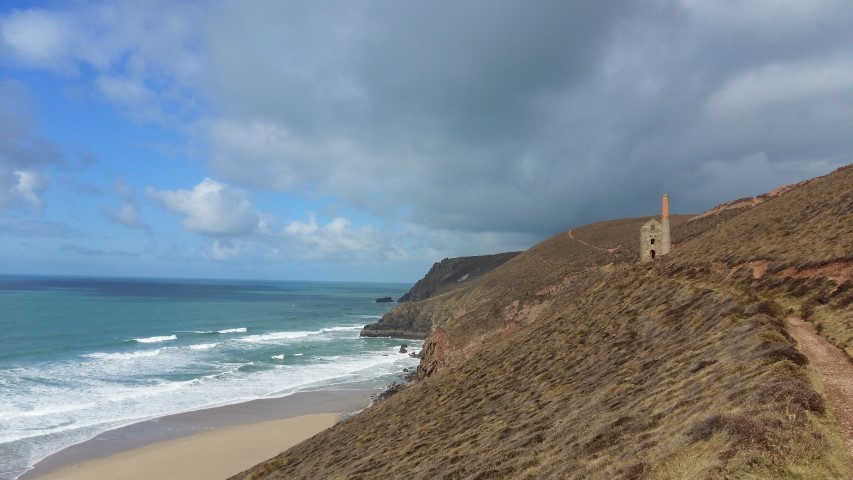| Walk 2: Looking towards the west, over the expansive sands of Porth Towan. At low tide, it is possible to walk from Porth Chapel to Porth Towan. With our Perranporth adventure very much in mind, it's not something I'd suggest to Mrs P without careful studying of the tide tables. Wherever and whenever you walk along the Coastal Footpath, you are accompanied by the sound of crashing waves and tumbling surf - wonderful. Apparently, the cliff top paths way down on the left have been used to film Ross Poldark on some of his many (many, many, many) galloping scenes. |








































